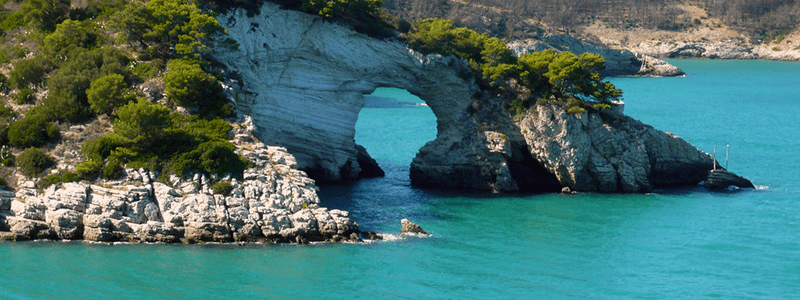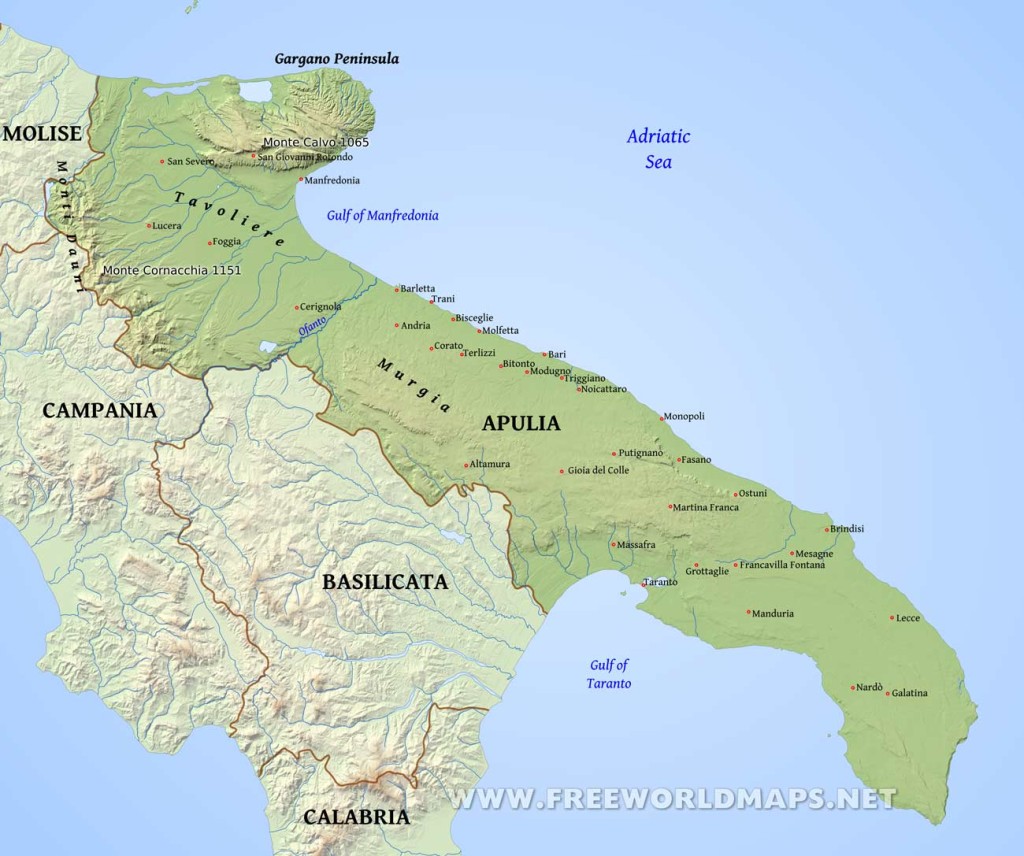
The Region of Puglia, often referred to as the “heel of Italy’s boot,” is a fascinating blend of history, culture, stunning coastlines, and delicious cuisine. Over the centuries, Puglia has been shaped by numerous civilizations—from the Greeks and Romans to the Normans and Spanish—each leaving a lasting imprint on its architecture, traditions, and way of life.
With crystal-clear seas, sun-drenched landscapes, unique trulli houses, and charming old towns, Puglia is an underrated Italian destination that promises an unforgettable experience. Whether you’re looking to explore ancient castles, vibrant city streets, or breathtaking beaches, this guide will take you through the best places to visit and things to do in the Region of Puglia.
Puglia’s History: A Land of Conquerors and Cultural Influences
A Strategic Province Through the Ages
For centuries, Puglia has been a sought-after region, frequently invaded and ruled by major empires, including:
- The Greeks – Established early colonies along the coast.
- The Romans – Developed agricultural schemes and infrastructure.
- The Normans – Built impressive cathedrals and fortifications.
- The Spanish – Introduced Baroque architecture, particularly in Lecce.
Traces of History in Puglia’s Landscape
Each ruling dynasty left a distinctive mark on the region’s architecture and urban design. Visitors can witness these influences in:
- Roman agricultural systems and remains.
- Fortified medieval towns, such as Ostuni and Cisternino.
- Saracenic-style kasbah quarters, like the one in Bari’s Old Town.
- Swabian castles, including the famous Castel del Monte.
Puglia is a living museum, where ancient traditions blend seamlessly with modern Italian life.
Best Places to Visit in the Region of Puglia
Bari – The Capital of Puglia
Bari, the largest city in Puglia, is a bustling port town with a mix of old and new attractions.
Top Highlights:
- Basilica di San Nicola – A stunning Romanesque church that houses the relics of St. Nicholas.
- Bari Vecchia (Old Town) – A maze of narrow streets filled with traditional homes and small trattorias.
- Lungomare Nazario Sauro – A scenic seafront promenade perfect for sunset strolls.
Lecce – The “Florence of the South”
Lecce is famous for its exuberant Baroque architecture and vibrant cultural scene.
Must-See Attractions:
- Piazza del Duomo – A magnificent square surrounded by stunning churches.
- Basilica di Santa Croce – A masterpiece of Lecce Baroque architecture.
- Roman Amphitheater – Dating back to the 2nd century.
Trani – A Seaside Gem
Trani is a charming coastal town known for its historic harbor and stunning cathedral.
Key Attractions:
- Cattedrale di Trani – A breathtaking Romanesque cathedral by the sea.
- Swabian Castle – Built by Frederick II in the 13th century.
Alberobello – The Land of Trulli
Alberobello is a UNESCO World Heritage Site, famous for its conical-roofed trulli houses.
Why Visit?
- Trulli District – Walk through the fairytale-like Rione Monti neighborhood.
- Trullo Sovrano – The largest and most impressive trullo in town.
Ostuni – The White City
Ostuni’s whitewashed buildings, set against the blue sky, make it one of the most picturesque towns in Puglia.
Things to Do:
- Wander through labyrinthine streets and hidden courtyards.
- Visit the 15th-century Ostuni Cathedral.
- Enjoy panoramic views from Piazza della Libertà.
The Gargano Peninsula – A Nature Lover’s Paradise
For breathtaking landscapes, head north to the Gargano Peninsula, home to:
- Foresta Umbra – A lush forest perfect for hiking.
- Vieste & Peschici – Seaside towns with stunning beaches.
- Tremiti Islands – A secluded paradise with crystal-clear waters.
Salento – The Southernmost Beauty
Salento, the southern tip of Puglia, is known for its rocky cliffs, hidden coves, and Greek-influenced culture.
Top Spots:
- Gallipoli – A charming fishing town with stunning beaches.
- Otranto – Famous for its historic cathedral and scenic coastline.
- Santa Maria di Leuca – Where the Adriatic and Ionian Seas meet.
Beaches and Outdoor Activities in Puglia
Puglia is home to some of Italy’s most beautiful beaches, perfect for swimming, snorkeling, and sunbathing.
Best Beaches in Puglia
- Baia delle Zagare – A pristine beach with towering limestone cliffs.
- Pescoluse (Maldives of Salento) – White sand and turquoise waters.
- Punta Prosciutto – A hidden gem with crystal-clear sea.
Outdoor Adventures
- Hiking in Gargano National Park.
- Exploring sea caves in Polignano a Mare.
- Cycling through Valle d’Itria’s countryside.
Food & Wine: The Flavors of Puglia
Puglia is Italy’s agricultural heartland, producing some of the country’s best olive oil, pasta, and wines.
Must-Try Puglian Dishes
- Orecchiette alle cime di rapa – Hand-shaped pasta with turnip greens.
- Burrata cheese – A creamy, fresh cheese from Andria.
- Focaccia Barese – A delicious, fluffy bread topped with tomatoes and olives.
Puglia’s Finest Wines
- Primitivo di Manduria – A bold, full-bodied red wine.
- Negroamaro – A dark, intense red with fruity notes.
- Verdeca – A crisp white wine perfect for seafood dishes.
Getting Around Puglia
Public Transport
- FS Trains connect major cities like Bari, Lecce, and Brindisi.
- Private rail lines serve remote areas like Gargano and Le Murge.
- Buses reach most towns but can be infrequent.
Best Way to Explore Puglia?
Renting a car or scooter is the easiest way to visit coastal villages, countryside wineries, and hidden beaches.
Conclusion: Why Visit the Region of Puglia?
Puglia is a hidden treasure of Italy, offering stunning coastlines, fascinating history, rich cultural heritage, and delicious cuisine. Whether you’re exploring the ancient cities, relaxing on pristine beaches, or savoring local food and wine, Puglia provides a genuine and unforgettable Italian experience.
With a slower pace of life and warm hospitality, the Region of Puglia invites you to immerse yourself in its beauty and traditions.


